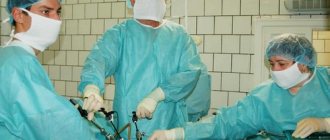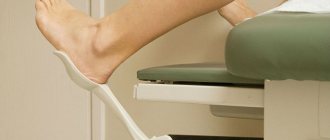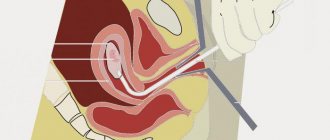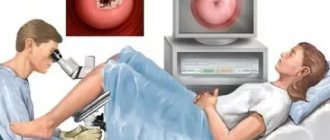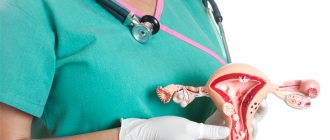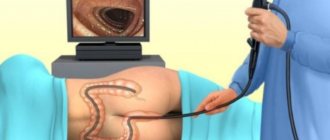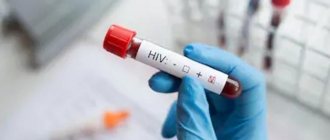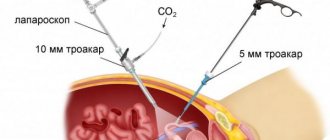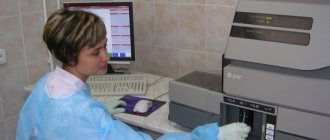It is known that microorganisms, despite their “small growth,” also have food “predilections,” an optimum temperature, in general, an environment that is ideal for them, where they feel comfortable and good, and therefore begin to multiply and grow intensively.
Bacteriological culture, or, as it is commonly called in short, tank culture, is used to obtain a large number of microbes of one type (pure culture) in order to study their physicochemical and biological properties, and then use the obtained data to diagnose infectious diseases.
Unfortunately, even the currently popular enzyme-linked immunosorbent assay (ELISA), polymerase chain reaction (PCR) and other methods, the main disadvantage of which are false-positive or false-negative results, cannot always identify the pathogen. In addition, they are not able to select targeted antibacterial drugs. A similar problem is solved by tank culture, which is often in no hurry to prescribe, citing the fact that, for example, ureamicoplasma is slowly cultivated, and the cost of analysis is considerable. However, health is worth it!
Conditions are needed for nutrition and breathing
Microbiologists now know that each pathogen needs its own “native” environment, taking into account its pH, redox potentials, viscosity, humidity and osmotic properties. Media can be soft and hard, simple and complex, universal and not very universal, but in all cases they must provide nutrition, respiration, reproduction and growth of the bacterial cell.
an example of the growth of microorganisms after tank sowing in a nutrient medium
Some media (thioglycolate, Sabouraud) are suitable for a wide range of microorganisms and are called universal. Others are intended only for certain species, for example, pneumococcus and Staphylococcus aureus, which produce hemolysins, grow on blood agar, which serves to isolate particularly “capricious” and, at the same time, dangerous strains. Thus, there are many types of media, where each of them grows its own range of microorganisms.
The purpose of cultivating microorganisms and its significance for diagnosis
In addition to water, air, soil, which contain various microorganisms in varying concentrations, including those that bring disease (pathogenic), many branches of medical science are interested in microbes living on the skin and mucous membranes of the human body, which can be represented by:
- Permanent inhabitants who do not pose any danger to humans, that is, the normal microflora of the body, without which we simply cannot live. For example, the disappearance of bacteria living in the intestines and participating in the digestion process leads to dysbiosis, which is not easy to treat. The same thing happens with the disappearance of vaginal microflora. It is immediately populated by opportunistic microorganisms, gardnerella, for example, which causes bacterial vaginosis (gardnerellosis);
- Opportunistic pathogenic flora, which causes harm only in large quantities under certain conditions (immunodeficiency). The above-mentioned gardnerella is a representative of this type of microorganism;
- The presence of pathogenic microbes that are not present in a healthy body. They are alien to the human body, where they enter accidentally through contact with another (sick) person and cause the development of an infectious process, sometimes quite severe or even fatal. For example, an encounter with the pathogens of syphilis - no matter what, it is treated at first, but (God forbid!) it will unleash cholera, plague, smallpox, etc.
Fortunately, many of them have been defeated and are currently kept under seal in special laboratories, but humanity must be prepared at any moment for the invasion of an invisible enemy capable of destroying entire nations. Bacteriological culture in such cases plays, perhaps, the main role in identifying the microorganism, that is, determining the genus, species, type, etc. (toxiconomic position), which is very important for the diagnosis of infectious processes, including sexually transmitted diseases.
Thus, sowing methods, like nutrient media, are different, however, they have the same goal: to obtain a pure culture without foreign impurities in the form of microbes of other classes that live everywhere: in water, in the air, on surfaces, on humans and inside it.
When is tank sowing prescribed and how to understand the answers?
Name of microorganism and its quantity
Patients do not prescribe bacteriological analysis to themselves; this is done by the doctor if he has suspicions that the problems of a patient presenting various complaints are associated with the penetration of a pathogenic pathogen into the body or with the increased reproduction of microorganisms that constantly live with a person, but exhibit pathogenic properties only in certain conditions. Having passed the test and after some time received an answer, a person gets lost and sometimes gets scared when he sees incomprehensible words and symbols, therefore, to prevent this from happening, I would like to give a brief explanation on this issue:
- The first point of conclusion, as a rule, is the name of the pathogen in Latin, for example, Escherichia coli. This is E. coli, it is a natural inhabitant of the intestines and in acceptable quantities does not cause any harm;
- The next point is the concentration of the microorganism. E. coli – abundant growth (1x10^6 or more) norm – less than 1x10^4;
- Next – pathogenicity: the flora is opportunistic.
When examining biological material for the presence of pathogenic microorganisms, the answer can be negative or positive (“bad tank culture”), since the human body is only a temporary shelter for them, and not a natural habitat.
Sometimes, depending on what material is to be inoculated, you can see the number of microorganisms expressed in colony-forming units per ml (one living cell will grow a whole colony) - CFU/ml. For example, urine culture for bacteriological examination under normal conditions gives up to 103 CFU/ml of all identified bacterial cells, in doubtful cases (repeat the analysis!) - 103 - 104 CFU/ml, in case of an inflammatory process of infectious origin - 105 or higher CFU/ml. About the last two options in colloquial speech, sometimes they are simply expressed: “Bad tank sowing.”
How to “find control” against a pathogenic microorganism?
Simultaneously with the inoculation of the material in such situations, the microflora is inoculated for sensitivity to antibiotics, which will give a clear answer to the doctor - which antibacterial drugs and in what doses will “scare” the “uninvited guest”. There is also a decryption here, for example:
- The type of microorganism, for example, is the same E. coli in the amount of 1x10^6;
- The name of the antibiotic with the designation (S) indicates the sensitivity of the pathogen to this drug;
- The type of antibiotics that do not act on the microorganism is indicated by the symbol (R).
Bacteriological analysis is of particular value in determining sensitivity to antibiotics, since the main problem in the fight against chlamydia, mycoplasma, ureaplasma, etc. remains the selection of effective treatment that does not harm the body and does not impact the patient’s pocket.
Table: Alternative example of tank culture results identifying effective antibiotics
When is a test ordered?
This study can only be prescribed by a doctor. Mainly when a specific disease is suspected, after patient complaints.
Thus, in gynecology, this study is prescribed for:
- pathological vaginal discharge;
- when planning pregnancy;
- for diagnosing inflammatory processes;
- for diagnosing diseases of the internal pelvic organs;
- inflammatory processes in the uterine cavity;
- if the patient complains: itching, burning, pathological vaginal discharge, menstrual irregularities.
This study is also considered mandatory during pregnancy. He prescribes a woman 2 times, the first time at the initial visit, the second time at 35-36 weeks.
During the study, pathological microorganisms are recognized.
Data analysis is also taken from men. In men, this type of analysis is prescribed for:
- recognition of pelvic organ infection;
- when planning a child;
- in inflammatory processes;
- in case of urination problems;
- erectile dysfunction;
- prostatitis;
- itching, burning, plaque on the penis;
- pain during ejaculation.
The material for sowing may be different. All this depends on the disease itself. So the material can be: urine, blood, oral mucous membranes, sperm, vaginal secretions, breast milk, wound discharge, contents of foci of inflammatory processes, cerebrospinal fluid and others.
This type of research is also prescribed in other industries to determine:
- selection of antibiotics;
- diabetes;
- dark coating on the tongue;
- treatment control;
- increase in leukocytes in the blood.
Proper preparation for bacteriological analysis is the key to reliable results
Any biological material taken from a person (skin, blood, sperm, mucous membranes of the oral cavity, respiratory and genitourinary tract, gastrointestinal tract, organs of vision, hearing and smell, etc.) can be subjected to bacteriological analysis. Most often, tank culture is prescribed by gynecologists and urologists, so we should dwell on it a little.
Proper preparation for bacteriological culture will be the key to the correct result, because otherwise, the analysis will have to be taken again and wait for the appointed time. How to donate blood from a vein for sterility is the task of health workers. As a rule, nothing depends on the patient here; he simply provides the elbow bend, and the nurse takes the sample into a sterile tube in compliance with all the rules of asepsis and antisepsis.
Another thing is urine or a swab from the genital tract. Here the patient must ensure the first stage (collection), following the prescribed rules. It should be noted that the urine of women and men is somewhat different, although in the bladder of both sexes it is sterile:
- In women, when passing through the urethra it can capture a small number of non-pathogenic cocci, although in general it often remains sterile;
- For men, things are a little different. The anterior part of the urethra can supply passing urine with:
- diphtheroids;
- staphylococci;
- some non-pathogenic gram-negative bacteria, as will subsequently be shown by bacteriological analysis.
However, if they are in an acceptable concentration (up to 103 CFU/ml), then there is nothing to be afraid of, this is a variant of the norm.
To avoid the presence of other microorganisms and to ensure maximum sterility of the material taken , before the analysis, the genital organs are thoroughly cleaned (the entrance to the vagina in women is closed with a cotton swab - protection from the ingress of genital secretions). For analysis, an average portion of urine is taken (the beginning of urination into the toilet, approximately 10 ml of the average portion into a sterile jar, the end into the toilet). Patients need to know: urine taken for culture must be processed no later than two hours when stored at no higher than 20°C, so transportation time should be calculated.
In addition, material for the culture tank, if necessary, is taken from the urethra and rectum in men, from the urethra, rectum, vagina, cervix and cervical canal in women, but this happens in the medical institution where the patient must arrive. Washing, douching and using antiseptics in such cases is prohibited.
How to prepare for the test?
In order for the result to be as reliable as possible, it is necessary to properly prepare for collecting material for research. For this:
- To ensure that there is no foreign flora in the smear, it is necessary to ensure the cleanliness of the genitals and the sterility of the biomaterial. You should not use any creams, moisturizers, or medications the day before the procedure.
- During the day before taking a smear, you should not insert suppositories into the vagina, perform douching or other procedures.
- It is also necessary to exclude sexual contact for 1 – 2 days before taking a smear.
- The procedure is not performed during menstruation. In this case, the material is collected no earlier than 2 days after the end of bleeding.
- After colposcopy and other gynecological examinations and examinations, material is collected only 2 days after such procedures.
- While taking drugs of the antibacterial or antibiotic group, it is not recommended to carry out bacterial culture, since such drugs can distort the state of the microflora.
- Before donating biomaterial, you do not need to carry out your usual genital hygiene using detergents or soap. Such procedures are allowed to be carried out in the evening, on the eve of visiting a doctor.
Other issues of concern to patients
Many patients are interested in how many days the analysis is done. This question cannot be answered unequivocally; it all depends on what material is being studied and what pathogen should be looked for. Sometimes the answer is ready after 3 days, sometimes after a week or even 10 - 14 days , since some samples require subculture to another medium.
People heading to tank sowing do not ignore the question of the price of analysis. The approximate cost in Moscow is about 800 – 1500 rubles. Of course, it can be higher and depends on the breadth of the spectrum of bacteriological search. You can probably get a free test during pregnancy at a antenatal clinic, or at a clinic for special medical reasons.
For pregnant women, tank culture is mandatory and is taken 2 times (at registration and at 36 weeks), and a smear is taken not only from the genital tract, but also from the mucous membranes of the nose and pharynx. The object of search in this case, in addition to urogenital infections, will be Staphylococcus aureus (Staphylococcus aureus), which in the postpartum period can cause a lot of trouble (purulent mastitis, etc.). In addition, pregnant women are required to undergo urine culture, scraping of the vaginal epithelium and smears from the cervix and cervical canal.
Many women, before going for the procedure, are very afraid of such terrible words and begin to think: “Is this necessary? Maybe I won’t go.” We hasten to assure you that the tests are absolutely painless. A smear from the cervix and cervical canal is taken with a sterile cytobrush, without causing the woman absolutely any pain, but subsequently a tank of inoculation from the w/m and c/c will protect both the expectant mother and the fetus from possible complications. The objects of search during pregnancy are the causative agents of chlamydia, urea- and mycoplasma, yeast-like fungus of the genus Candida (usually Candida albicans), trichomonas and other opportunistic and pathogenic microorganisms.
Flora smear in women - what it shows
This study is carried out for the following purposes:
- determination of the state of the vaginal microflora,
- identification of sexually transmitted infections and their causative agents,
- determining the presence and extent of the inflammatory process,
- assessment of the degree of vaginal cleanliness, which is mandatory for diagnostic studies, as well as in preparation for gynecological operations (cauterization of erosions, removal of polyps, curettage),
- assessment of a woman's health during pregnancy.
Smear for flora in women norm table:
The designation CFU/ml in the table is a quantitative indicator. CFU is short for “colony-forming units.” The value of the indicator means the number of specified microorganisms in 1 ml of nutrient medium.
The numerical indicator is presented as a decimal logarithm (logarithm to base 10). This makes it easier to write a number with a lot of zeros.
We will also be interested in what are gram-positive rods in a smear, or gram-negative ones. These terms are often used in descriptions of the vaginal microflora.
An example for understanding: lactobacilli are gram-positive rods in a smear. Yes, these bacteria perform useful work in the microflora. The epithet “Gram-positive” was formed simply - the microbiologist Gramm identified the specific color of this particular category of bacteria. Gram-negatives do not change color when you try to stain them.
It is significant that in women of reproductive age, gram-positive bacteria predominate in the microflora. When entering menopause, gram-negative bacteria begin to predominate. And the balance has to be maintained artificially (most often with regular supplements - candles).
The microflora also includes aerobic and anaerobic bacteria. The former require oxygen for life, but the latter do not. The vaginal microflora is mostly anaerobic bacteria.
Normal vaginal microflora
It must be clearly understood that even a healthy woman’s vagina is not sterile. There are other risks besides STDs. There are many microorganisms around us that we cannot see. And for some of them, a favorable habitat seems to be the vagina.
The collection of microorganisms that choose the same habitat is called microflora.
All these inhabitants collected in one place begin to compete with each other. There is a struggle for accommodation and food.
Among the inhabitants of the environment (in this case, the vagina) there are microorganisms that make up normal microflora and pathogenic communities.
The most numerous inhabitants of the vagina include lactobacilli and bifidobacteria. These are representatives of normal microflora. The products of their vital activity are lactic and other acids, alcohols, and peroxide. These substances provide an acidic reaction for vaginal secretions.
An important property of these bacteria is the production of lysozyme and other enzymes that inhibit the proliferation of pathogenic microorganisms.
When to take a smear for flora
Typically, a smear for microflora in women is taken during a routine examination by a gynecologist. Don't neglect planning. The gynecologist will suggest terms that you should agree with.
Early detection of problems is the key to successful treatment.
In any case, it is necessary to take a smear for flora if:
- itching and, possibly, vaginal discharge were noticed, which may indicate a possible inflammatory process,
- It’s time for a scheduled examination with a gynecologist,
- there is a need to monitor the treatment being carried out,
- treatment was carried out, which included hormonal drugs and immunosuppressants,
- intermediate control of microflora is necessary during long-term use of antibiotics,
- pregnancy test is positive; 3 control smears during pregnancy - during registration, 30th and 36th weeks.
Special cases of particular interest to those taking tests
Once pathogenic microorganisms enter the genital tract, they take hold within a very short time and begin their harmful activities. For example, always pathogenic gonococci (Neisseria), which are the culprits of a rather unpleasant disease called gonorrhea and related to STDs, feel “at home” literally on the 3rd day. They begin to actively reproduce and boldly move upward along the reproductive tract, capturing more and more new territories. Everyone knows that gonorrhea can now be treated well and almost no one is afraid of it anymore. But first you need to find her. The main method of searching for this infection is culture, culture, identification using Gram staining, and microscopy.
“Coffee beans” (diplococci) found in pairs in a smear taken “for flora” from the genital tract do not indicate the presence of a sexually transmitted disease. Such vaginal microflora often appears in postmenopause and does not mean anything bad. A smear taken under non-sterile conditions on a glass slide and stained with methylene blue or Romanovsky (cytology) cannot differentiate the microorganism. He can only make a guess and refer the patient for additional research (obtaining an isolated culture).
It should be noted that while scrapings from the mucous membranes of the genitourinary tract taken for culture for ureaplasma are not such a rare occurrence, then doctors themselves often avoid urine culture, since it is more difficult to work with.
Difficulties in diagnosis are created by chlamydial infection, which causes great harm not only during pregnancy . In addition, chlamydia causes many diseases that are characteristic not only of women, but also of the male population, so it is sown, cultivated, studied, sensitivity to antibacterial therapy is determined and, thus, it is combated.
During pregnancy, it is generally difficult to do without bacteriological culture, since many microorganisms, masked in a cytological smear, can be missed. Meanwhile, the effect of some STD pathogens on the fetus can be detrimental. In addition, treating a pregnant woman is much more difficult, and prescribing antibiotics “by eye” is simply unacceptable.
What does a smear show on flora?
First of all, a smear on the vaginal microflora can give a picture of the state of the reproductive sphere. This is a very important point, since reproductive pathology can lead to many problems.
Here are the pathologies you can learn about during the procedure:
- sexually transmitted infections (STDs). This is an obvious result if the smear contains significant quantities of microorganisms such as gardnerella, ureaplasma, gonococci, trichomonas, etc.,
- inflammation of the vagina - specifically vaginitis or colpitis, as well as inflammation of the cervical canal, which appears as cervicitis or endocervicitis,
- vaginal dysbiosis. A situation in which gram-positive bacteria are inhibited and pathological microorganisms begin their destructive effects,
- candidiasis or thrush. A widespread problem of fungal infection.
The results of a smear on the flora are assessed according to the following indicators:
- squamous epithelial cells. The walls of the vagina are lined with special cells. In the normal state, these cells are single. A sharp increase in their number (in medical language - epithelial layers) is usually caused by inflammation (vaginitis, cervicitis). A deficiency of female sex hormones leads to mucosal atrophy, which is confirmed by the absence of squamous epithelial cells in the smear. The number of cells may vary depending on the period of the menstrual cycle.
- leukocytes. White blood cells (as leukocytes are called) have the function of fighting infectious agents. The higher the number of leukocytes in the field of view when examining a smear for flora, the more serious the inflammation in the woman’s genital area.
- gram-positive rods. Beneficial microorganisms include lactobacilli. It is these microorganisms that form the basis of the microflora of a healthy woman. A decrease in the number of lactobacilli relative to the norm indicates the presence of dysbacteriosis and the risk of developing infectious diseases.
- slime. This is a special secretion secreted by glands located in the cervical canal. The secretion constantly circulates in the vagina (excreted/absorbed) and can be detected in small quantities (about 5 ml per day). An increase in the amount of mucus in a flora smear indicates possible inflammation in the cervical canal.
- “key” cells. These are cells separated from the squamous epithelium, which are surrounded on all sides by bacteria. Mainly gardnerella. When such cells are detected, vaginal dysbiosis is diagnosed.
- spectrum of bacteria. The study describes the composition of the microflora in the smear.
Sowing methods
To isolate pure cultures of pathogens, the first stage is to inoculate them on appropriate media, which is carried out under special (sterile!) conditions. Basically, the transfer of material to the medium is carried out using devices used back in the 19th century by the great Louis Pasteur:
- Bacterial loop;
- Pasteur pipette;
- Glass rod.
Of course, many instruments have undergone changes over 2 centuries, replaced by sterile and disposable plastic ones, however, the old ones have not remained in the past, continuing to serve microbiological science to this day.
The first stage of obtaining colonies requires compliance with certain rules:
- Sowing is carried out over an alcohol lamp in a box pre-treated with disinfectants and quartz treatment, or in a laminar flow hood, ensuring sterility in the work area;
- The health worker's clothing, gloves and environment must also be sterile, since the opposite interferes with the isolation of isolated strains;
- You need to work quickly but carefully in the box; you cannot talk or be distracted; at the same time, you must remember about personal safety, because the material can be infectious.
Isolation of strains and study of pure cultures
The isolation of strains is not always the same, since some biological media found in the human body require an individual approach, for example, hemoculture (blood) is first “grown up” in a liquid medium (ratio 1: 10), since blood (undiluted) can kill microorganisms, and then, after a day or more, they are transferred to Petri dishes.
Sowing urine, gastric lavage waters and other liquid materials also has its own characteristics, where in order to obtain a pure culture, the liquid must first be centrifuged (aseptic conditions!), and only then sowed, not the liquid itself, but its sediment.
Cultivation and growing of colonies is carried out on Petri dishes or placed first in a liquid medium poured into sterile bottles, and then the isolated colonies are sown again, but on slanted agar and the material is placed in a thermostat for a day. After making sure that the resulting culture is pure, the strains are transferred to a glass slide, a smear is made and stained with Gram (most often), Ziehl-Neelsen, etc., and for differentiation, the morphology of the microbe is studied under a microscope:
- Size and shape of the bacterial cell;
- Presence of capsules, flagella, spores;
- Tinctorial properties (relationship of microorganism to staining)*.
*The reader has probably heard of such a pathogen as treponema pallidum? This is the causative agent of syphilis, and its name (pale) is why it appears that it does not perceive paint well and remains slightly pinkish when stained according to Romanovsky. Microorganisms that do not accept aniline dyes are called gram-negative, and those that perceive are called gram-positive. Gram-negative bacteria are given a pink or red color when stained with Gram by additional dyes (fuchsin, safranin).
Tank culture can be called an ancient analysis, but its popularity does not decrease because of this, although modern bacteriology has the ability to isolate not only strains, but also a separate cell from it, which is called a clone. However, to obtain a clone, a special device is required - a micromanipulator, which is not available in ordinary laboratories, since it is used mainly for research purposes (genetic research).
Decoding the results
Diagnosis can only be made by a qualified physician. The doctor assesses the patient’s condition based on the information obtained during the research. Regardless of the type of institution in which the study was conducted, the results form will detail the normal values. The obtained indicators need to be compared with them.
Reference values should be within the following limits:
- typical e-coli – 107–108;
- Escherichia hemolytic coli - bacteria of this type must be completely absent from the biomaterial being studied;
- lactose-negative bacillus – less than 105;
- microbes like Proteus – less than 102;
- other opportunistic enterobacteria – less than 104;
- non-fermenting bacteria – less than 104;
- enterococci – less than 108;
- hemolytic staphylococcus - bacteria of this type must be completely absent;
- bifidobacteria – 1010;
- lactobacilli – 107;
- bacteriids – 107;
- clostridia – less than 105;
- yeast fungi – less than 103.
Even if the results deviate greatly from the norm, there is no need to panic, since in some cases such deviations can be caused by external factors. Only an experienced specialist should decipher the analysis and make a diagnosis.
According to the degree of growth, the biomaterial under study is classified into 4 degrees:
- 1st degree. The growth of bacteria on a liquid medium is weakly expressed, and on a solid medium it is completely absent;
- 2nd degree. The growth of one type reaches 10 colonies on a dense medium;
- 3rd degree. The growth of bacteria reaches up to numbers from 10 to 100;
- 4th degree. Significant growth of the colony (more than 100).
If the patient is diagnosed with stage 1 or 2, this indicates that the disease is not caused by the microorganisms present, but by other reasons. 3 and 4 indicates that the symptoms are caused precisely by the microorganisms present.

